Female Superhero Representation in Comics
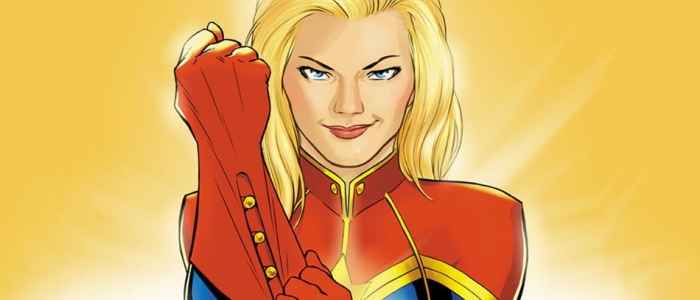
Black Widow. Wonder Woman. Scarlet Witch. Cat Woman. These might be some of the characters that come to mind when asked to think about female superheroes. Now, think about what they’re wearing.
Ever since the dawn of superhero comics in the early twentieth century, women have been objectified within those square windows, no matter how powerful or likable the character is. This is often done through their skin-tight and usually suggestive costumes, gender ratio, and more. However, over the years, women have been gaining more ground in the comic book world. According to Graphic Policy’s article about “Comic Fandom on Facebook“, in July of 2015, women made up approximately 42% of American Facebook users who “like” comics and anything associated with them. Eventbrite states that 40% of people who attended fan conventions in 2014 were female.
Women are becoming more and more prominent in the comic book world, especially as people grow more confident with bringing issues to the forefront. It can be assumed that the more people talk about feminism and its representation in superhero fiction, the more women will feel better about admitting that they like comics, even if those same issues still exist (for now).
Ostentatious Outfits
When someone pictures Black Widow, what is she wearing? Probably a skin-tight leather catsuit. Catwoman? The same thing. Wonder Woman wears a colourful unitard and various accessories. Scarlet Witch wears a unitard as well, also with various accessories that don’t cover much. Furthermore, Emma Frost and Starfire are both well known for being scantily clad.
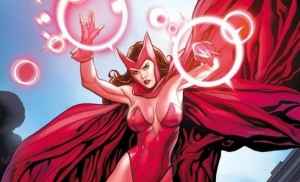
Several female superheroes have iconic uniforms, but does that mean that they should always save the day without wearing any forms of protection whatsoever? As times change, so does fashion and the need for a sense of realism in comics. Comic book duo David and Meredith Finch, who drew and wrote Wonder Woman #41 respectively, took Diana Prince’s original costume and came up with a new design created to represent her status as an amazon queen. It was designed to look something along the lines of what she would really wear to a fight. The new costume was made up primarily of armour in her signature colours, leaving only her hands and face bare.
In an interview with CBR News (where you can take a look at the costume), Meredith Finch states that,
“… [Wonder Woman is] also a warrior, so I wanted [it] to be a really strong, solid costume. It hints at the Amazon culture but also fits in[to] the modern world… It’s strong and reflective of who Diana is, and is still very recognizable as a Wonder Woman costume.”
Some fans complained about the lack of skin showing, claiming that feminists think women should cover up everything. Comic book artist J. Scott Campbell (known for his work on Danger Girl) made a comment on the design as well.
“I rarely comment about comic book industry matters on my personal [Facebook] page, but I gotta say, shoulder pads, especially big bulky metal ones NEVER look good on women. Everything about them is unfeminine and lacks style. No grace to this approach at all. And on a side note, I find the continued knee-jerk reaction to internet message board critics demands to keep female heroines covered from head to toe in fabric an overreaction. She’s an Amazon Warrior, she’s NOT in the Taliban!”
Campbell brings up an interesting point. The notion that fans want superheroines to be completely covered is unrealistic in and of itself. It’s illogical to think that just because you can’t see a woman’s skin that she’s being correctly represented in comics. Captain Marvel’s latest uniform covers all except her face (except when she wears her mask) and she is loved by critics and fans alike. It’s not because she isn’t showing any skin. The Finch couple’s decision to completely cover Wonder Woman appears to be a stylistic choice based off the fact that they wanted it to be form fitting and stylish, but useful in battle. While the storms about overt sexualization of female characters in comics may have influenced their decision, a character does not need to be covered head-to-toe in order not to feel like she’s showing too much.
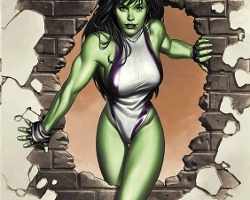
Take She-Hulk, for example. Her costume consists of little more than a one-piece bathing suit, yet it covers what many other superheroine costumes don’t. There is a lot of skin showing, but that’s because she doesn’t need armour – what she needs is free movement. It suits her character perfectly.
Feminism in comics doesn’t consist of wanting to hide women’s attributes; it consists of not blatantly showing them off to appeal to the male audience while the character completely lacks development. If the reader can’t answer the question of “Why would this person wear something like that to a fight?” then it is not a realistic representation of female superheroes. Granted that the word “realistic” must be used lightly in correlation with the world of superpowered heroes, mutants, villains, and aliens, but part of what makes comics fun to read is imagining what the world would be like if these ridiculous things actually happened. If they did, it is probable that women wouldn’t wear barely-there clothing in battle, especially if their abilities don’t prevent them from getting into close range combat.
Modelling for Males
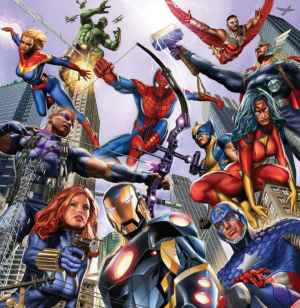
Not all women are gymnasts. Many of them can’t pose the way they often do in comics. There are poses in comic book covers and pages that are drawn mainly to show off a woman’s butt and breasts at the same time, which is hard to do in real life. Their body parts are usually twisted so that the outline of their curviest parts is clearly visible.
Last year, one of Marvel’s variant covers for the female-driven comic Spider-Woman sparked enormous controversy (see it here). Spider-Woman is pictured as if trying to climb a wall… on the roof. Her posterior is the most defining and eye-catching of the entire cover and it has been described as overtly sexualized. The artist, Milo Manara, is known for his erotic drawings and many fans question the decision to have him create that particular cover for that particular series.
In response to such unnecessary contortionism, fans of comics have created The Hawkeye Initiative (click here to see some of the fan art). The basic idea behind the initiative is to draw superheroine poses from actual comics with male characters (particularly Hawkeye) in their stead and see if they look just as appealing. If it looks ridiculous and impossible, then it’s considered sexist.
The initiative has garnered a lot of attention from over fifty different websites and media platforms, including the Canadian and British Broadcasting Corporations. With plenty of submissions by artists and comic fans alike, the uproar about sexism and the need for its depletion is quickly rising in popularity. Things like The Hawkeye Initiative raise awareness about the representation (sexual or otherwise) of women in comics with the hope of one day creating a superhero world with gender equality to parallel our own (eventually).
The Carol Corps
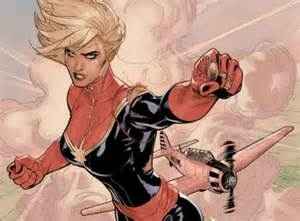
One superheroine who’s viewed as a feminist is Captain Marvel, also known as Carol Danvers, written by Kelly Sue DeConnick. She’s considered to be so strong and popular a character that Marvel Studios has decided to give her a movie of her own in 2018. Captain Marvel will be the studio’s first foray into a film led by a female superhero. The film is expected to be based heavily on DeConnick’s version of the character, as she has revamped the previously mistreated Ms Marvel (who started out strong, but was neglected and shunted in the latter half of the twentieth century) into Captain Marvel. The series has been praised for its quality storytelling and presentation of a strong female character with a distinct lack of sexism.
Because of its strong run, enthusiastic fans have declared themselves the Carol Corps and made Captain Marvel a phenomenon in the comic book world. With powers similar to Superman, Captain Marvel is a powerhouse with an attitude and DeConnick says that she thinks Carol’s desire to do better and be better is part of what makes her so relatable.
Reviewing Gender Ratio
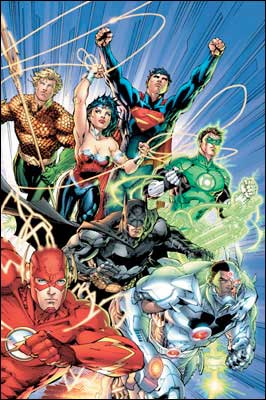
Going back to Wonder Woman for a minute, while she is definitely THE superheroine icon, she’s also the only woman in a team of males. It could be argued that it is a misrepresentation of gender ratio to assume that only one woman would be on a superhero team. Even the cinematic version of the Avengers only included one female Avenger, the Black Widow, until Marvel’s Avengers: Age of Ultron, when Scarlet Witch changed sides and joined the team. Still, the two women are undoubtedly outnumbered by their male teammates. In the first incarnation of the Avengers in comics, the only woman is Janet Van Dyne, whose alter ego is the Wasp. The Fantastic Four, affectionately known as Marvel’s first family, consisted of three men and one woman.
For years, super women have been on teams of superheroes and are usually outnumbered by the men. Even the X-men, who are known for having several powerful female characters, started out with only one: Marvel Girl. Since then, characters like Phoenix, Storm, Kitty Pryde, Rogue, Jubilee, Psylocke, and Mystique have been associated with the team in the comics and films, yet they still seem outnumbered.
In the real world, the number of men versus women is even more skewed than in the comics. According to a study conducted by comic book historian Tim Hanley, in June of 2014, only 10.1% of DC comic credits belonged to women. In the same month, 12% of Marvel Comics credits belonged to women. Credits include editors, colourists, writers, editors, and more. While the women behind the pages are few and far between, they have always been there.
The documentary She Makes Comics explores the history of women in the comic industry. From eighty-eight year old comic book artist Ramona Fradon to Captain Marvel writer Kelly Sue DeConnick, She Makes Comics emphasizes the larger than previously assumed contribution of the female population to the comic book industry.
This industry has come a long way from its golden age. Marvel currently has a podcast entitled The Women of Marvel which is run by a squad of females working for Marvel Comics who talk about the Marvel Universe and many female-related topics within that universe. In May of 2015, Marvel published its first all-female roster of Avengers titled A-Force. This is one of Marvel’s several female-driven comic series’ currently running and on the way to store shelves. Others include Silk, Captain Marvel, Spider-Gwen, Thor, and Princess Leia. DC Comics has also been praised for its newest incarnations of Batgirl and Gotham Academy, both mostly led by girls.
Aliases and Alter Egos
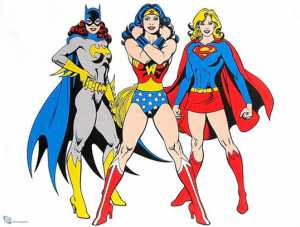
There are currently a lot of superheroines and supervillainesses and many of them have great character and personality. However, there is something to be said when several of these women have alter egos associated with the male superheroes who came before them. She-Hulk. Batgirl. Spider-Woman. Supergirl. Why do they have to be associated with their male counterparts? Why couldn’t they have grown into their own, independent super identities? Why must their names distinguish them as females instead of being gender neutral? Why couldn’t the X-men have been the X-Mutants?
Good examples of gender-neutral names include Captain America, Falcon, Green Lantern, Daredevil, Phantom, Green Arrow, the Atom, the Flash, the Shadow, Angel, Rogue, and apparently Thor. Yet many superheroines have the female distinction when it’s unnecessary. Why? Why couldn’t She-Hulk have been distinguished by her lawyer status? Why couldn’t Spider-Woman have been called the Arachnid? Maybe Batgirl could’ve been Sonar in reference to an actual bat?
Sexism and sexual discrimination were still very prominent in the time when superhero comics were becoming popular. Back then, women weren’t seen or treated as equals. Now, comic book companies (and hopefully everyone else in the world) are changing the way they treat women, fictional or otherwise. The television show Marvel’s Agent Carter, a female-driven spy/thriller derived from Marvel comics with a gender neutral alias, demonstrates the kind of sexism common in the nineteen forties while also proudly showing off the type of powerful woman that fans and feminists alike want to see onscreen and on the page.
Total gender equality is coming and comics are one more stepping stone to the representation of said equality in fiction.
What do you think? Leave a comment.



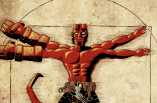
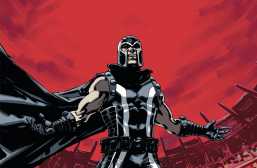
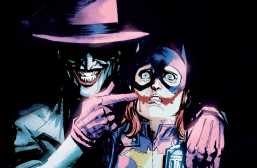
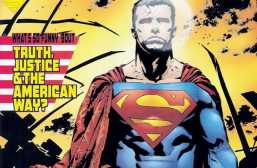
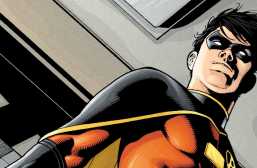
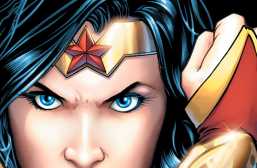
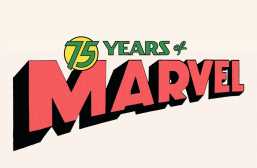
The comic book industry needs more eye candy, and more characters of the ‘piece of meat’ variety. These are fantastic developments.
More superheroines!
She-Hulk, Bat-girl, Super-girl, Spider-woman; they are all just rubbish versions of the male originals.
The true feminist super hero would be Wonder Boy; a male side kick for Wonder Woman.
He would be just like Wonder Woman, but rubbish (and cute).
You may be thinking of Doug Ramsey, male sidekick to the X-Men’s Kitty Pryde and the New Mutants’ Warlock. He’s cute, he has ineffectual super powers and gets captured a lot, and he could easily be replaced by a sexy lamp.
A new generation of heroes are revolutionising the world of comics and consigning sexualised stereotypes to history.
What is the point of attributing overwhelming violence to any women ‘superheroes’ when in fact it is a huge negative?
Why is it that women have to exhibit the same sort of ‘powers’ as men characters to be considered revolutionary?
I don’t see this as progress, i see this as a further limitation of desirable traits for women as leaders…acting like a brain-dead ‘super’ man and answering every problem with violence hardly seems progressive at all…
If you read the actual comics you’d realise that this is exactly the point the writers are making. One of the recent stories in the new Thor run is all about how she approaches a challenge that the old, male Thor tried to solve with violence, with a different approach. Ms Marvel empowers other teens to rebel against adult forces that tell them they’re worthless. She-Hulk is a legal comedy with barely any superhero fights.
You completely miss the point of superheroes.
Can we please break the ultimate taboo and have a female superhero who is not really, really, ridiculously good-looking? We have heroes of every demographic except unattractive, or even of regular attractiveness.
Well, there’s Big Bertha, but she’s a model when not using her powers, so dunno if it counts.
What about Super Gran, and Bella Emberg’s Blunderwoman
How about Doreen Green from the current run of Unbeatable Squirrel Girl? She’s pretty, but not super skinny and a relatively awkward college student.
Well done. It is a really timely issue and you make a lot of good points. I think it is important to keep bring attention to this so that maybe it can be fixed and we can admire female superheroes for their ethics, morals, prowess and powers instead of their looks and costumes!
Um, actually Spider-Woman was called Arachne in her first appearance issue. It was her Hydra name, it was Nick Fury later in the issue and in the next issue she appeared in The Thing who called her Spider-Woman. The only reason she was named Spider-Woman was because the Tarzan animated series was about to claim the name, Stan Lee found out and ordered Marvel to grab it before they did.
Further Spider-Woman comes from a male name hero, Spider-Man. So he is equally called out by his sex, just like Batman to Batwoman and Batgirl, and Superman to Superboy, Superwoman and Supergirl. Simply put comics where huge on trademarking all possible sex and age distinctions between the 1930s and 1980s. Look at Wonder Woman at DC comics and Wonder Man at Marvel, if they didn’t grab the names other comic companies grabbed a name they could ride off of. It was just business back then.
However all these companies grabbed the names and copyrighted them only to realize if they didn’t use the name for a series title they’d lose the copyright. Just look at Captain Marvel, theres been at least 4 companies whov used the name with near a dozen characters. Hence why non sex based names never got created for characters based off other characters. Names like these are IPs that are worth potentially far too much to ever lose, especially in the obscure Superhero movie era we live in now.
Now in some instances these characters based off others of a different gender remained out of the supporting character sidekick trope. Spider-Woman for instance was almost always seperate from Spider-Man. Other characters like Carol Danvers took over the male characters iconic name, Captain Marvel, they where side kicks to decades ago. And others like Batgirl are getting reimagined for more female centric audiences.
Times are improving, arguably not fast enough, but they are improving. I agree with most of what you wrote, I just feel you brushed over much of the history that got us to this point.
Many more sexist costumes are going away, mind you not all the replacement costumes are perfect, some just covering up a bit more others nice attempts but not quite distinctive yet. For example I like Spider-Woman’s new suit but I hate those sunglasses, she needs the mask back.
Thanks for bringing this to my attention. I apologize for glossing over that. It was unintentional.
Instead of looking at the costumes as too revealing and objectifying to the superheroines why don’t we see it as empowering? Yes the costumes accentuate their form but shouldn’t women be proud of their bodies and confident in their sexuality? They are portrayed as strong women, with muscles, fighters. Seeing a woman with a physique like that of a superhero in real life, most people would think she’s too muscular, almost manly. I don’t see it that way at all. A woman can have as much muscle mass and strength as a man. I find that showing their bodies is really empowering. They own their bodies, their curves and muscles…and breasts, and are not afraid to show it.
While you have a point, many artists tend to draw women with the intent of attracting male readers rather than giving the character confidence. Many of those drawings are also unrealistic, as the women have very little muscle and are usually very thin, rather than strong. When a woman is drawn anatomically correct and has a confident personality, then a uniform that shows off can definitely be empowering. I feel like She-Hulk’s uniform embodies that perfectly. From what I know of She-Hulk, she prefers her green form because it gives her muscles, form, beauty, and strength (not to mention that she gets to keep her intelligence). This might be why her costume is the way it is (see above photo).
I agree to a certain extent, but let’s face it- some of the most revealing costumes are simply not comfortable or valuable as armor. You don’t necessarily need to cover everything up, but it would be nice to see artists try for a touch more realism seen in the male heroes’ costumes.
I think they are female – not feminist – superheroes.
I’m not into comics myself, so I don’t have much of a dog in this.
I’ve heard people say that they’d prefer original female superheroes rather than just a gender swap for an established character.
Ms Marvel looks cool though btw.
I think the biggest insult to women is the casting of Gal Gadot as Wonder Woman in the up and coming Superman film. You have the most iconic female superhero of them all. She is a tall Amazonian woman with a muscular body-builder body that doesn’t match the conventional wisdom of female beauty. A real symbol of female power. Then they cast Gal Gadot a stick thin, and bad, actress to play her in the films because they think she is physically more appealing to men than how she is represented in the comics.
There has been a massive backlash against her casting because people feel her casting was sexist. They wouldn’t cast a stick thin male actor to play a muscle bound male hero so why is it okay to have a skinny actress play female superhero who is meant to muscle bound?
Gal Gadot has tried to flip the sexism argument by claiming people are complaining about her not having big enough breasts to be wonder woman, but it is more about the body not being anything like how the character is represented. Hollywood was not brave enough to cast a bigger, heavier and muscular woman as the part so went with the usual skinny beauty queen.
Superheroes are hardly representations of what people look like in real life, however, otherwise we’d all be mighty thewed and wearing capes. Spiderman has always been more about his spider powers and gymnastic ability rather than brute strength, so let me introduce you to another superhero – straw man.
Before Frank Miller became a massive dick he created one of the best and strongest female characters in Martha Washington from the Give Me Liberty mini series. She looks like a combination of Grace Jones and Ellen Ripley and dressed and armed like Arnie in Predator.
Great story and character is what led to it being a success. The pathetic soft-hentai shit like Wonder Girl is tiresome and a little bit totally creepy.
Give Me Liberty was fantastic.
It’s refreshing to see some positive feminism, where people actually talk about the good things. These characters are awesome.
You know, my 22 year old daughter is a huge nerd. Her absolute favorite superhero is (male) Thor.
Are they feminist superheroes or are they just feminine superheroes. Surely if gender equality had really won then you’d be referring to them as simply superheroes.
Gender equality hasn’t quite won yet, but we’re getting there.
I personally don’t care about comic books, but I don’t understand why writers gender-reassign characters just to tick boxes and get a pat on the back from otherwise enraged feminists. Make successful original female characters instead of leeching off the success of male ones, otherwise its just lazy and patronising.
Nonsense. As you say, you don’t care about comics, so you probably aren’t aware of the constant reinvention and revamping and rebooting that goes on. This is just a part of that tradition, albeit a long overdue one. It might upset a handful of sad misogynistic shut-ins but that’s no bad thing and it help makes up for all those lost opportunities to welcome more female readers by making use of some of the great proven characters of the past as well as paving the way for the creation of some exciting new ones. This is a very welcome shift in attitude and can only strengthen the future of comics.
DC has treated Wonder Woman in a severely misogynistic way. They gave her to a Vertigo writer named Brian Azzarello, whose chief claim to fame was the revenge and snuff-porn series 100 Bullets.
He proceeds to turn the Amazons of Paradise Island into a barbarian tribe living in mud huts. Periodically, they turn into black widows, leaving the island to seduce men who they kill. They trade their male children to a Greek god for weapons — before that deal, they used to kill them — and develop no technology on their own.
Wonder Woman herself is now just another of Zeus’s demigod bastards. She’s also managed to become the “God (sic) of War”, which apparently entails her feet dripping blood and being empowered by wars among humans. Her sister Donna Troy is now an abomination created from the petrified corpse of Hippolyta.
I suspect that crowing over feminist progress in comic books is a bit premature given this extremely shabby treatment of a classic character. The feminist and utopian elements have been deliberately stripped from Wonder Woman and her world. One thing it shows is that copyright lasts way too damned long; Wonder Woman ought to have long since entered the public domain. And fans of characters deserve some version of “moral rights”; a character like Wonder Woman is a part of the cultural heritage of the United States and deserves to be treated like one.
The X Men comics have had strong female characters aplenty for years, but Marvel Comics, in an act to spite Fox who now own the X Men movie franchise, are deliberately running the X comics into the ground and pushing the Avengers – who they are making box office money out of – front and centre, hence the presence of Ms Marvel, Lady Thor and She Hulk featuring so strongly in the comics these days. And the irony is, the movie makers at Fox aren’t very interested in the female X Men hence the Days of Future Past movie revolving around Xavier, Wolverine and Magneto where the comic actually only featured Wolverine and he was a supporting character to Storm and Kitty Pryde.
Interesting article – I don’t know if I agree with much of it, but it’s good to see things from another perspective.
I cannot imagine any 8 to 13 year old boy pretending to be the she-hulk or miss superman in the school playground?
Tank girl was a pretty decent read for a while
But why should any 8 to 13 year old girl have to pretend to be Hulk or Superman? Shouldn’t comics reflect, and serve, a wide range of readers so that everyone can find someone who they can at least relate to?
Feminism in comics is definitely an underrepresented issue. When people are yelling over Supergirl’s outfit being ‘too practical’ and ‘too concealing’ despite still being a very fair representation of her original costume, and saying that Kara can’t carry a show without Clark, you know there’s an issue with people’s perception. Even looking at many comic book covers today, we see the problems addressed here, such as positioning women’s bodies unreasonably simply to look ‘sexy’.
So I definitely appreciate the well-developed ideas and thoughts you provide on the issue.
However, I hope you don’t mind if I raise a bit of an issue with a few elements of this post, because I think it falls into some common misconceptions of just how the comic industry fails to be feminist positive.
Probably the biggest concern I notice is how large of an issue you make costume out to be when it comes to the lack of feminist representation. While costume choices and design are definitely an issue for female superheroes, I think that it’s the wrong area to put so much focus on. For one, you say that women are often in ‘skin tight leather suits’ in comics, but the same is often true of the men. Superman is dressed in tights, Batman wears head to toe Kevlar (a fancy term for thick leather more or less), and Spiderman’s suit really only leaves the face to the imagination. So females having skintight clothes isn’t really much of an issue when the men are in the same situation.
This also works off of the mistaken assumption that women have to be fully covered to be feminist, but that simply isn’t the case. Feminist representation isn’t about whether more skin is being covered, it’s allowing characters to wear what best suits them and not sexualizing or shaming them for it. For example, if Kamala Khan (Ms. Marvel) was forced into a unitard and drawn with overly large breasts, it wouldn’t fit her personality or what she’s comfortable with. Instead she wears a very reasonable outfit, and she’s never shamed for covering herself so much. Likewise, another character may be very open and confident in their sexuality, and feel the most open in less clothing. Both of these are very legitimate ways to be female, and it depends on the treatment of the character as a result to determine whether or not it’s feminist.
You address this a bit with She-Hulk, but I think you still approach the issue with the wrong mindset. Several of the characters you listed even at the very beginning of your article actually have legitimate reasons for their designs.
For example, Catwoman: Selina Kyle was a prostitute and dominatrix before she became a notorious thief. But even after she left those days behind her, she has continued to use her sexuality to her advantage. It’s a part of her character and a part of her background. So her outfit and presentation of herself make sense.
Black Widow (from my understanding of the character) is very similar. I suppose if there was one difference it would be that her use of sexuality as a weapon is much more shallow than Catwoman’s, so doing things such as always having her suit halfway zipped isn’t so reasonable in comparison. Something that artists have failed to take note of.
Koriand’r (Starfire) is a bit different. She comes from a different planet that is very much about self-expression. She very freely expresses herself physically, and yet is never accused of being ‘slutty’ or even ‘sultry’. Instead it’s just another layer to her character. Now, I will add that while this is true of her representation in the Teen Titans and Titans comics, the creators of Red Hood and the Outlaws really did begin to stretch their levels of ‘acceptable’ exposure. This is because they used an even skimpier outfit as an excuse to further sexualize the character, instead of allowing the character to simply express herself.
Even Wonder Woman is difficult to just lump into this area. Amazonian culture is based off of Greek culture, in a time that wasn’t exactly well known for keeping their legs covered. Especially not for warriors. Diana herself mentions at times that she feels uncomfortable in pants, especially on the battle field. The viewpoint that her costume should be more covering is understandable, but to say that it absolutely should be isn’t the case.
I can’t speak much The Scarlet Witch, but I would like to say that I don’t fully disagree with your point. Women are definitely over sexualized in comics. However, the problem isn’t in the fact that there are a decent number of female superheroes with skimpy outfits, it’s the pattern that’s formed, making it so that a female superhero who prefers to be as covered as men is rare, instead of balancing it out. We can definitely see that pattern being formed, and people going out of their way to continue to ‘dress down’ female superheroes, so the problem is clearly there. And there are self-entitled misogynists out there who would argue at a drop of a hat that a woman is not ‘interesting’ unless they’re barely clothed. So please don’t mistake me, this is a good point to make.
However, I think that it’s the wrong point to emphasize.
You spend a long time talking about costume design, and it is your opener. I think that puts a bit too much focus on what is probably the least of the problems facing women in comics. See, ultimately, it doesn’t have to matter what female characters are wearing. The problem is much deeper than just costume design when it comes to the over sexualization and objectification of women in comics. On the surface the main issue is simply the pattern. None of the instances of skimpy costume design are a problem by themselves, but they do become an issue when they form the predominant pattern in comics.
But skimpy outfits don’t have to lead to objectification.
A good example is the recent Mad Max movie, Fury Road. In it there are four (I believe) woman called ‘the wives’. For the duration of the movie they are clad in nothing except thin white sheets that quite frankly barely cover them. They are the definition of ‘scantily clad women’. You would think this would lead to the women’s sexualization, but instead the camera and the characters treat them the same way they would someone dressed in head to toe battle gear. They aren’t sexualized or objectified by the movie, and therefore the audience doesn’t even really realize that they’re staring at women who are wearing barely anything. The media platform treats them with respect, therefore they are respected. So women can be dressed with as much or as little clothing, and still not be objectified.
Take even some of the male superheroes. Hawkman is known for often running around in tights and no shirt. But he’s not really known as the definition of the male fantasy, nor is he objectified. His outfit is revealing, but the narrative, the artists, and the characters do not treat him like a piece of meat. Therefore, his outfit isn’t either a positive or a negative to his character, it simply is.
So while dress of female characters is a feminist problem, it isn’t quite as shallow of an issue as simply what the characters are wearing, and it isn’t really among the most important. You get into a bit when you mention that the poses of female characters are often ridiculous and try to emphasize their sexuality and looks. This is often the worst on covers, as they are trying to engage sex hungry teens into picking up the comic to begin with. But the treatment of female characters in this manner goes beyond that. Often the art of a series and the narrative are very specifically set up to objectify a female character. Again, Red Hood and the Outlaws is a good example of this. While Starfire has a fierce personality she is objectified throughout the comics, and clearly oversexualized. Sometimes the issue is as explicit as this, and sometimes it’s more subtle.
Which is where we get into the real issue I wished to see more if in your article: the characterization of female characters.
We have come a long way over the years, this is definitely true. But that doesn’t mean that many female characters aren’t currently being mishandled in modern comics. These are usually things beyond art work though. It’s how females are consistently characterized, or the role they’re forced to play. The problem with arguments about female superheroes’ costumes is that it can be used as a mechanism to overlook real problems and mistreatment of female characters.
The newest Starfire title for example. The authors give her more covering clothes than before, and decide that they don’t want to sexualize the character. Because of this, many people immediately jumped on support of the comic. However, what’s found is that the once brave, noble, and intelligent Koriand’r has now been infantilized, to the point of being silly and flat out dumb; not to mention the fact that she is still seen as a sex symbol among the people around her. People look at her outfit and said “now this is feminist progression in comics!” but that wasn’t what we’re being given at all when it comes to actual characterization.
You mention Batgirl of Burnside in your article as well, but it faces a similar problem. They gave her a new, slightly less form fitting, outfit with no heels, and marketed to a younger demographic of girls. Because of this, people went wild over the series. But when getting caught up in the hype many failed to realize that the Barbara Gordon that had been built up over decades before had been completely demolished in favor of a more ‘immature’ face. Barbara Gordon took being Batgirl very seriously and felt she had a moral responsibility to her role. She was somber, logical, and safe. In spite of that she could certainly have fun in her role! But she was always the more studious and book smart of the three Batgirls. Then the reboot came along and decided to deage the character significantly, decided to take away her representation of a disabled minority by making the wheelchair just a passing phase in her life, and chose to have her represent as the only Batgirl cutting out the other two (three technically) altogether, despite the fact that there were still four Robins in that same time frame. Instead of allowing there to be more female characters, and allowing Barbara’s actual personality to be highlighted, Batgirl of Burnside decided to strip Barbara Gordon of her previous identity. Instead of being studious, serious, and book smart, she’s now wild, immature, and silly. There can be arguments made that she’s smart in a different way (though from what I’ve read of the comics I could see some very convincing evidence to challenge that with), but even if that is the case, they still decided to make her more ‘conventionally female’. She’s flouncy, she’s fun, and she’s a little airheaded. No matter how smart she’s portrayed to be below that surface, that is still the personality front they are putting up for her now, despite that not fitting with her previous characterizations at all. It becomes even more infuriating to know that the third and youngest Batgirl, Stephanie Brown, could have fit this idea much better as she was known to be the most playful of the three; she was very lighthearted and hopeful in how she approached the job. She was never silly, and we all knew she was smart, but she was definitely more conventionally female and fun. And that was fine because that fit her personality! But instead of adding in more female characters, they decided to keep to one, and to vastly rewrite her character to fit their idea of what a female superhero ‘should be’. But the problem is, because on the surface it looks feminist, people assume that it actually is. They don’t even realize that it’s really a form of feminist erasure.
These are the issues I think you should have focused on a bit more heavily, instead of just what a female superhero’s outfit is. Because the objectification angle is more than just the amount of skin showing, and often artists covering up skin or presenting themselves as more ‘female friendly’ can really just be a straw tactic to infantilize characters and rewrite their characterization to fit a more ‘traditional’ and ‘feminine’ mold.
A few other things I noted: I like that you brought up Captain Marvel, but I would have liked to see more examples of comics doing well in this area. Such as Ms. Marvel or Spider Gwen or even Silk from what I’ve heard. Perhaps a more diversified example of how to do female superheroes right.
And while I see your point on naming, I think you also overlook a lot of the male counterparts for the names you list. For example: Batgirl is gender specific, but so is Batman, the same for Supergirl. In fact, Superman also has another younger ‘sidekick’ called Superboy, so it’s not just restricted to females. Spider Woman is justified because her counterpart is called Spiderman. If gender is inherit to the male character’s superhero persona, it isn’t really misogynistic to give female heroes the same types of names. It would be misogynistic to have a Robingirl or a GirlRobin, but not a Batgirl to a Batman. And something to keep in mind is that many of these characters that have ‘boy’ or ‘girl’ added to their name start while young. Often they have these add ons to their names because they are the student or sidekick of an older hero. As many age and grow older they often drop the names dependent on their mentors and move to something new (i.e. Batgirl going on to be Oracle or Wonder girl going on to be Troia). And for those like ‘Spider Woman’ they are clearly basing their motif on an already preexisting hero. But then again, if a man dressed as a spider could show up and be called Spider Man, why then should it not be the same when a woman dressed as a spider comes along?
Not to mention that most of the ‘standalone’ male aliases you mention don’t have a female counterpart, or if they do, then their name isn’t derived from the male’s. Green Arrow for example has a sidekick named Speedy, the second of which is female. He also works with Dinah Lance, known as the Black Canary. There are in fact female Green Lanterns, and, just like their multiple male counterparts, they are simply called ‘Green Lantern.’ Flash has two sidekicks, Kid Flash and Impulse, either of which can be any gender. Falcon, Captain America, the Atom, and the others you mention don’t really seem to have female counterparts.
Now that’s not to say you don’t have a bit of a point here. Names such as She-hulk and continuing to call young women ‘girls’ well into their twenties are a problem. But I don’t think that it’s as large of an issue as you make it out to be here. At least, not with the evidence you provide.
Again, I like your points, and that you are discussing feminism within comics. I think that this is very important. But I also think that you make the same mistake a lot of feminist do when examining the issue, which is getting caught up in the technicalities and blinding yourself to the reality. Yes, costume design and the like is an issue, but female objectification goes so much further than that. Ultimately, it’s merely the pattern that’s the issue, not the outfits themselves when it comes to simply what female superheroes are wearing. But objectification and sexualization don’t need to be dependent on what a character is wearing.
I would also recommend looking into a few of the characters you list a bit more as well. I hope I’m not making an improper assumption here to say that you are more familiar with Marvel comics then you are with DC? There’s no issue in that (as you can probably tell from the examples I provide I’m more familiar with DC than with Marvel), but I would say that if you are going to use female icons that you are not quite so familiar with then you should definitely research them a bit more. You notice that Catwoman has a skintight leather suit and often has cleavage showing. Ask yourself why, and then investigate the comics personally, including some variations of her origin story. And then simply repeat the process. That way you’re able to point out the less justified costume designs. From there, you can then jump into the deeper issues that women in comics face in the modern age.
Other than that, I commend you for writing this article, and continuing the budding trend of calling out the sexism within comics.
I really appreciate that you took the time to correct me on all of that. It’s true that I am more familiar with Marvel and I completely understand all of the points you made. I see that I have made many mistakes in my lack of research and on the points that I chose to focus on. I can’t believe that I didn’t focus on actual treatment of the character more than just how she looks. Your comment is probably more informative than the actual article! Thank you for bringing this to my attention.
No problem!
And don’t worry, like I said, you still make a lot of great points in your article, it’s just a matter of where to focus your attention more. It’s a common mistake to make, so I don’t blame you at all for that, I just wanted to bring it to your attention since a lot of people don’t realize some of these things.
These are just things to keep in mind if you ever want to write on the subject again (which I hope you do!). It may show you different areas to focus on, or different angles for thinking about the issue.
Thanks again for writing the article!
It is obvious that the writer is new to, well…writing. And that is just fine, because we all start from somewhere.
And while it is also not fair to expect every person to possess intricate intersectional-feminist type content analysis skills, this article fails to mention how the “female superhero representation” in comics and their movie/TV show adaptations is also problematic because of a severe lack of women of color, transgender women, and/or women living with disabilities. In other words, it onl shows a very specific kind of women i.e. those who are white, and visibly young, cisgender and able-bodied.
We all come from our own positionality in case we are not privileged enough to have received thorough awareness of issues of diversity, the writer’s own social location probably limited their perception to a more mainstream feminist analysis. Still an interesting read.
As a woman who loves reading comic books, I love this post. I think it is great that superheros are represented as male and female, because that’s exactly what real superheros are. For me, reading comics with women has helped me feel empowered as a woman, and I think it can do the same for others. http://www.emetcomics.com/comics-index/
I believe in women empowerment and equality. But the people who take it too far are just being ludicrous. It is true that most comic book writers make their female characters appear sexual. It is only wrong if you consider sex a bad thing. Sexualization of these characters happens solely in the readers mind. for example, there are people who sexualize feet, hands among others. Hell, people even sexualize puke or the dead. This just proves that sexualizing a character or object is mind based. So a writer decides to make his characters sexual. So what. We live in a world that is sexual in almost every way. Kim Kadashian posts a nude pic and no one bats an eye, but the whole world goes crazy about catwomans new 52’s costume. You don’t see men raising up banners. because the hulk is shirtless. Women should learn to do the same.
I really enjoyed this article, and am particularly horrified by the recent artistic depictions of Spiderwoman in hyper-sexualized poses. I understand that superheroes need to wear tight athletic clothing so that they can perform their super-duties properly; however, the legacy of sexism dominates the comic world, as proven by the author of this article. Well done.
I don’t see how the current female super heroes can be seen as being feminist friendly when they’re all basically super models?
That depends on the definition of “feminism” they are using.
Slattery proved a good point, I like the female representation, but it’s also unrealistic because of the way they look. I think it’s starting off great, but we can get better, but for starters it’s something awesome!
I definitely agree that times are changing. Outside of the world of superheroes, I can say that the Transformers comic series is benefiting from the inclusion of more female Transformers, which have been few and far between for decades. There’s still a long road ahead before female representation is equal to that of their male counterparts, but Captain Marvel shows that there’s definitely hope.
I really like this article. You cover a lot of background information while looking at the topic from different angles. I agree that comic girls need better uniforms. Personally I’d like to see something that I could see myself fighting in- and that’s definitely the most skin tight outfit I own.
I love how spot-on this is. Even though women are becoming more involved/prominent, there is still a skew between the number of men vs the number of women (even more so when it comes to women in some position of power) A) in fiction and B) who are a part of the creation of that fiction.
Very nice article. It’s also important that when discussing this topic of oversexualization to not look down upon sex appeal entirely. It’s not bad for a character to like sex or readers to enjoy the character’s sex appeal, but is it practical for the scenario the character is in? I’m thinking of Vampirella, a character built on sex appeal, and how she might maintain that aspect of her character while also being updated beyond being eye candy.
I believe this trend will pass. I can’t see female readers (or writers) sticking with comics for the long haul like males, they are more apt to move on to something else as they mature, most likely something that involves some sort of evolution or progression for them personally; be it politics or feminism or the environment, etc. Male comic readers (and writers) are generally obsessive and will keep reading comics because it defines who they are culturally, and the key to that obsession is that heroes don’t really change. For the generation of young women currently enjoying and obviously influencing the depiction of female characters in comics, this is not a deep to one’s core and long-term meaningful relationship like it tends to be for males. In fact it’s something quite the opposite of that relationship, it’s more akin to moving into a furnished apartment and rearranging the furniture. Male readers start very young and to a great degree, seek role models in male characters. Female readers are discovering comics at a much older age, during adolescence or even in their early 20’s – when they have already established, to a far greater degree, core values and know who they are. In turn, they look to shape the female characters to fit their already hard-earned self image as not fluffy sex objects. The Kardashians are not reading comics. The young women who are interested in comics are not glamour-pusses and not materialistic and thrive on change. I’m pretty certain that female comic readers will outgrow comics and as sales slump, the industry will go back to catering to male predilections, which is probably more healthy than the suppression of natural instincts we’re seeing right now. For close to 100 years, comics have been a male dominated industry that functions as a socially acceptable form of titillation. Comics with scantily clad women are “adult” entertainment for males who aren’t comfortable with skin mags and want something more than just bodies to look at; they enjoy the context and connection one can only get in a narrative format. I don’t think there’s anything wrong with that, but more and more it seems like that kind of product is being demonized out of political correctness. The development of such an item in the marketplace was a natural one that evolved over time, but I can’t help but wonder if a healthy outlet is being bottled-up by the same kind of controlling impulse that would dictate that everyone only eat “organic” food or strictly watch public TV. Ultimately, this is a power struggle within a capitalist institution, and the market will bear only so much leeway in lieu of profit, which will be determined by enough readers choosing to continue to read books that once featured characters in one way and now in another. My expectation is that like New Coke, covered up super-heroines will be back sooner than later in their Classic form.
I’m just getting into comic books/graphic novels and superheroes. I have always been aware of the female “stars” of the media, but this article gave me much more insight.
In both, male or female characters there’s always going to be an element of sexuality present in their costumes. The article on Radiotimes.com pointed light on the fact that Male costumes always seem designed to emphasize his power and strength. Often choosing to show off the hero’s oversized biceps (like with Thor), or going so far as adding precisely placed padding to accentuate a set of killer abs. Female costumes, on the other hand, are often designed to emphasize sexuality. Typically only covering the bare minimum (her lady parts) but leaving substantial amounts of bare skin, including large breast, a slim stomach, and long legs.
For example, Psylocke from the film X-men Apocalypse–– at first glance, she looks like an empowered, kick-butt, super-villainess but how does her costume (or lack thereof) improve her powers of telekinesis? I admit the sexualization of heroes and heroines alike does entice the eyes but is it necessary to ’empower’ the heroine by stripping her down to a leathered version of undergarments? But then there’s the point made in this article about She-hulk, she wears an onsie because it is fitting to her ‘superpower’. Her skin is resilient unneeding of armor but she does need a full range of motion and a more flexible take on attire material. (we can’t judge too much, her male equalivant of the Hulk only wears pants.)
Overall, I enjoyed this article and found it very enlightening on both arguments.
Cool
In terms of appearance, it’s mostly the poses that are oversexualized in female characters, not necessarily the costumes. I mean, the Hulk is shirtless but you don’t see him doing the sexy pose while fighting. The imbalance is that male superheroes look more or less like how athletic men can look in reality, while female superheroes don’t, as most athletic women in reality have more muscle definition and less breasts because getting fit burns up fatty tissue and some even get breast reduction because being top-heavy gets in the way of movement. Point is, at least being muscular is functional in combat, while big boobs and sexy posing in battle isn’t.
The recent series of Naomi is a conundrum. She is a superhero in her own right though is introduced on the coattails of Superman as she is a weblogger of his adventures. She then appears to be pansexual before her foster parents reprimand her from leading her friends on (which is not what a friend would do). She then criticises her peers from inaction and being ambivalent when she does the same though can’t see it. While she may represent an adolescent and an origin story, she also highlights why fallible superheroes don’t always work and why adolescent ones tend to operate better as sidekicks. I am not sure she makes for a satisfying role model despite adequate representation and setting.